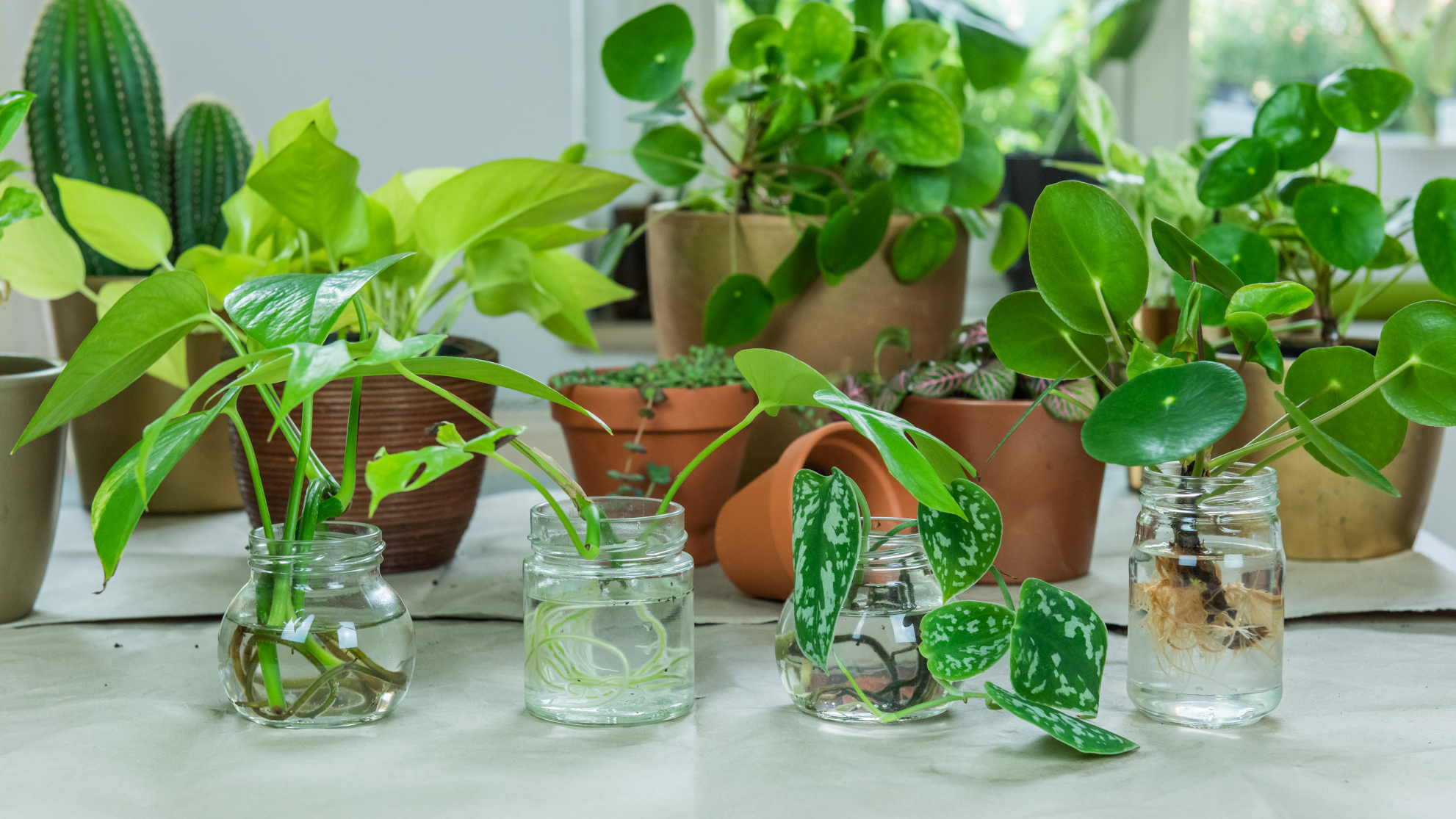
There’s a joy in growing your own plants, whether it’s sowing seeds for fruit and vegetables in your yard or propagating plants. Seeing new life sprout and flourish is immensely satisfying, and it's even more rewarding when you take a no-cost approach.
If you’re a novice, propagating houseplants is a good place to start. And since indoor plants have grown in popularity over the last few years, it’s likely you already own a houseplant or two.
Once your young plants develop, you can place them around your home or gift them to friends and family. Giving new plants is certainly one way to spread the green-fingered bug and encourage others to get propagating too.
We’ve selected 5 of the easiest plants to increase your indoor garden and explain the three methods of propagation – taking cuttings, by division or offsets.
Before you start
Ensure all your cutting tools, pruning shears or scissors are sterilized before use, to avoid passing on any disease or bacteria to the cutting or parent plant. They should also be sharp to give a clean cut. (Here's our guide on how to sharpen pruning shears.)
Snake plant
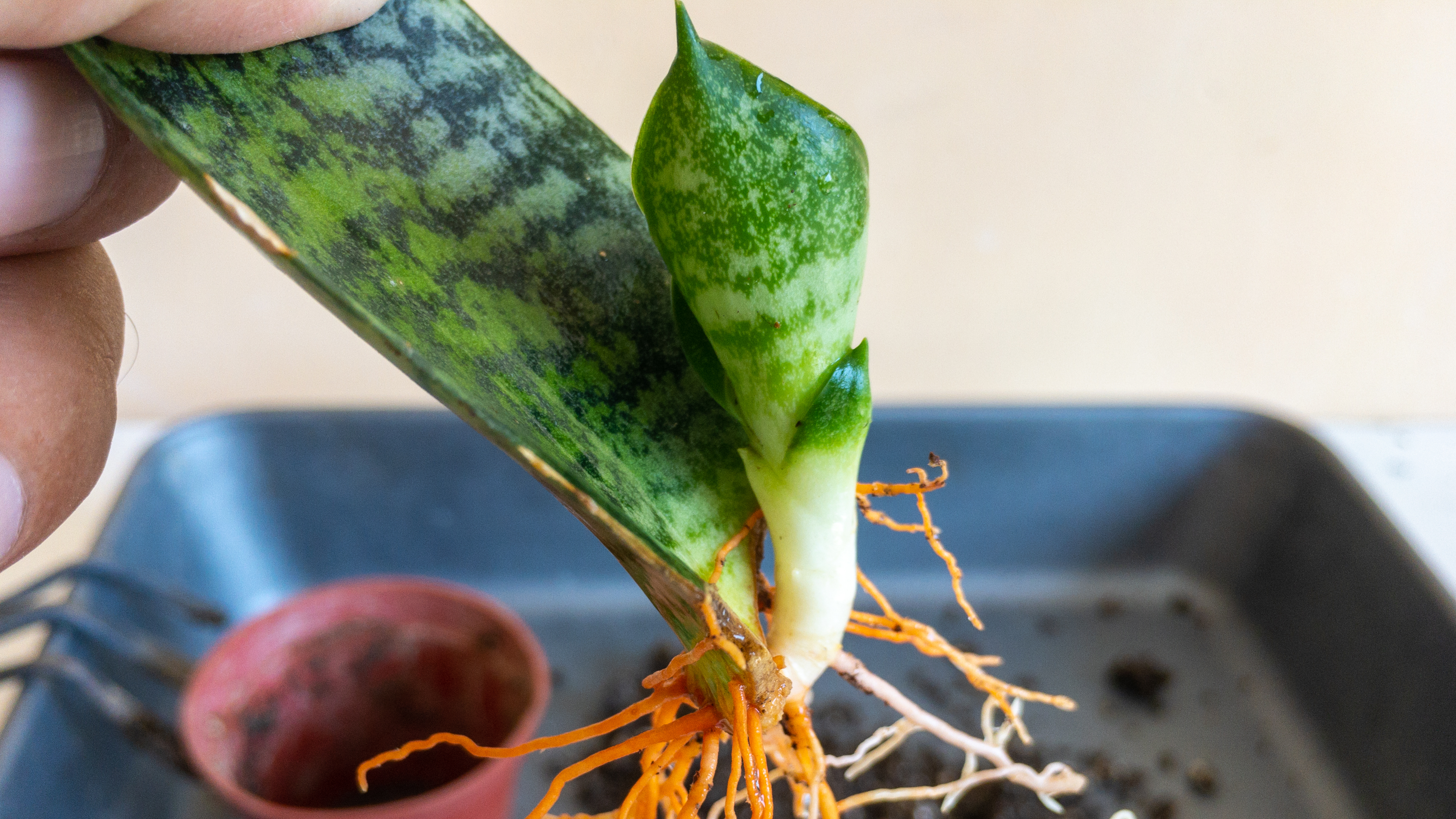
I do love a houseplant that is easy to grow and doesn’t mind if it’s forgotten about from time to time. Snake plants fit nicely within this category as they are one of the best low maintenance houseplants. I have one that thrives on my sunny conservatory windowsill, although they are also perfectly happy in duller climes.
The beauty about snake plants is that they do all the hard work for you. And as I sit here writing this article, I can glance across at my plant and see ‘pups’ that are growing by the side of the main plant.
What is a ‘pup’? It’s simply an offshoot or sister plant that grows from lateral roots just below the soil. Once ‘pups' have grown their own roots, they can be separated from the main plant and potted into a new pot to grow independently.
Here's what you need to do:
How to propagate a snake plant
- Remove the plant from its pot. If doing this inside, use a protective sheet to catch the soil.
- Gently prize a pup away from the main plant, be careful to untangle the roots if needed. If the roots are tightly bound you may need to cut them with a sharp pair of pruning shears.
- Place the new division into a pot with drainage holes, filled with a sandy potting mix, such as a cactus potting mix.
- Finally, position the new plant in a similar position to the parent plant and water regularly.
Pothos
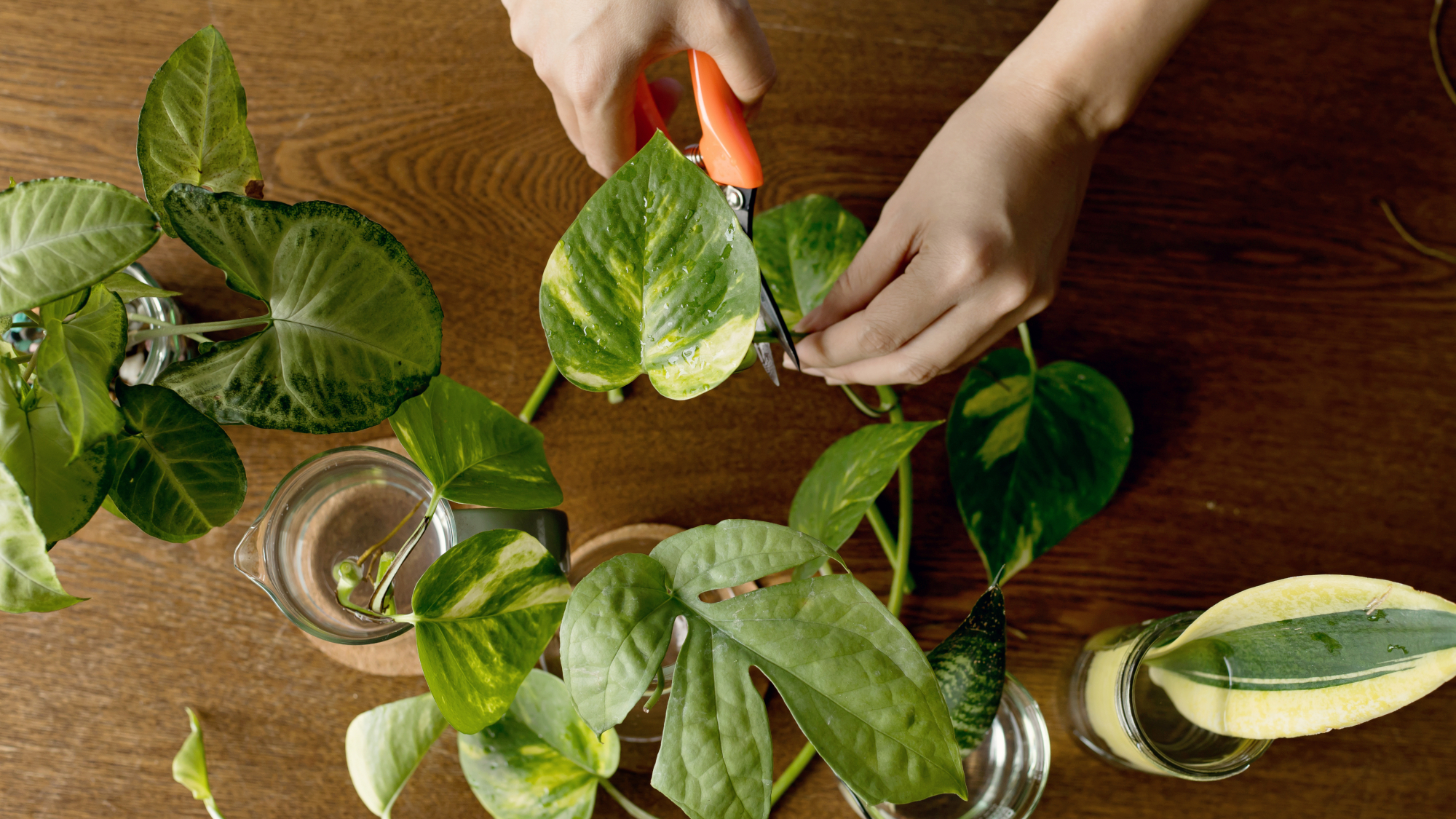
This popular houseplant is fast-growing and adaptable. It can be trained to climb or grown as a hanging plant. I have one that cascades down the side of a white wardrobe in my guest bedroom, the vibrant leaves brighten up an otherwise plain space. They are also suitable for bathrooms as they enjoy a humid atmosphere.
If you prefer them a bit tamer, they can be trimmed and shaped into a compact plant, but don’t fret if you're a bit heavy-handed with the snippers, they will soon grow back.
Apart from being easy to care for, pothos are super simple to propagate by the cutting method.
How to propagate a pothos
- Take a stem cutting directly below a leaf node – this is the bumpy part where the leaf joins the stem. Cut at a 45° angle to increase the surface area.
- Each cutting should have at least 3 or 4 nodes, where the new roots will grow.
- Remove the lower leaves, although keep a couple at the top of the cutting.
- Then, place the lower part of the cutting in fresh water, ensuring the nodes are submerged. A narrow glass container, like a jam jar, will allow you to see the roots forming, and replace the water if it appears cloudy.
- The roots will start to form after a few weeks.
- Once the roots are 2-3 inches long, the cutting can be planted in a pot with drainage holes and well-drained soil.
- Water the plant and place it in a sunny position, avoiding direct sunlight.
- Check on the plant for the first few weeks to make sure the soil remains moist.
Christmas cactus
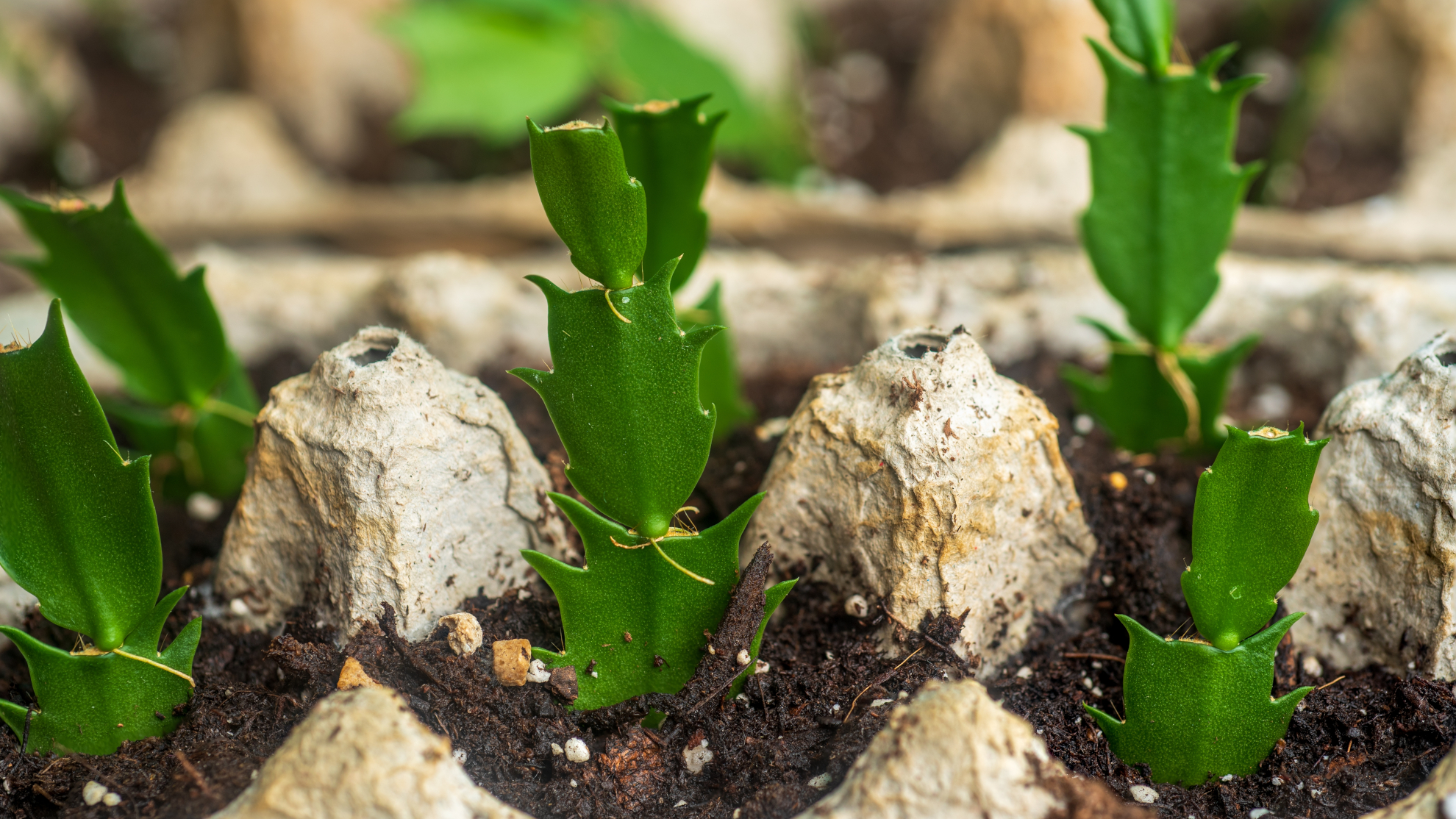
This long-loving holiday plant blooms indoors in the winter, making it the ideal houseplant to propagate and gift over the holiday season.
Its name is deceptive as unlike regular cacti that enjoy hot and dry desert conditions, it’s native to tropical rainforests and thrives in warm temperatures with high humidity.
Christmas cactus is easy to propagate, although for best results, it’s best if the plant isn’t producing buds when you take your cuttings. You’ll also notice that Christmas cacti have leaf segments rather than typical leaves, reflecting on how you take a stem cutting.
How to propagate a Christmas cactus
- Rather than cutting a leaf stem, pinch and twist it at the join, taking a stem between 3-4 segments long. Any longer, and it might tumble over in the pot before the roots establish.
- Multiple stems can be placed in the same pot – leave an inch or two between them. Place half of the first stem below the soil and cover with a moist potting mix.
- Place in a bright position with indirect light and water regularly to avoid it drying out.
Chinese money plant
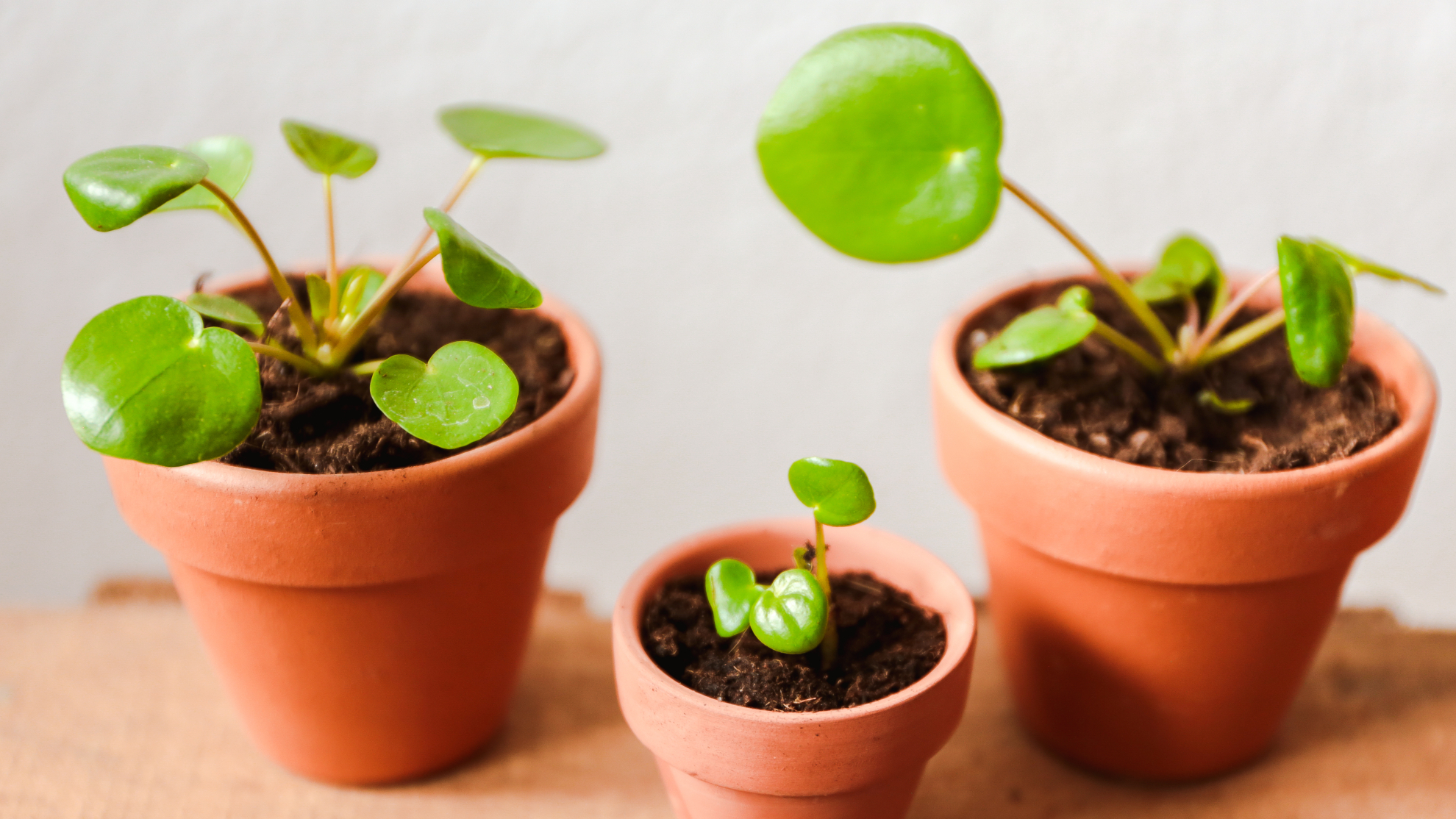
Given its name, as the vibrant leaves resemble coins, the Chinese money plant has always rewarded me with rich pickings. However, I have learnt that it doesn’t respond well to overwatering and needs to dry out between each water. But aside from my watering mistakes, I do love the compactness of this plant and the elegant shape of its leaves.
Because it’s easy to propagate, it's also known as the sharing or friendship plant. And from my experience, it’s always well received by my friends and family.
The Chinese money plant, like the snake plant above, can be propagated by division. The offshoots develop from the mother plant’s root system, but can also form from the nodes along the stem, where old leaves have fallen off.
How to propagate a Chinese money plant
- Taking a sharp knife or pruning shears, dig around the soil to expose the roots. Then cut the main root an inch or two below the soil.
- Place the fresh cutting in a pot with drainage holes and cover with a rich soil. I find adding perlite to the mix improves the drainage.
- Position the plant in a bright light and leave the soil to dry out between watering. I noticed my Chinese money plant began to thrive when I moved it from the middle of a room to a bright windowsill.
String of hearts

If you’re looking for a delicate plant, String of hearts makes a good choice. It's a trailing vine with small heart-shaped leaves and looks pretty on a shelf, windowsill or within a hanging basket. And if you prefer a little more colour in your leaves, the pink and silver Variegated String of Hearts is particularly pretty.
This plant is best propagated by the stem-cutting method, which can then be placed in either water or soil.
How to propagate a String of hearts
Using the water method:
- Take a 3-4 inch cutting with at least two internodes (these are the sections between the nodes).
- Remove the lower leaves from the cutting and put this end in water at room temperature.
- Position the cutting in bright, but indirect light.
- Change the water every 3-5 days until the roots start to grow.
- Then, place the cutting in a pot with a moist potting mix.
Direct soil planting
To grow the cutting in soil, follow the steps above, but rather than placing the cutting in water dip the end of the cutting into a rooting compound before planting up.
Don’t feel disheartened if your first attempt at propagating houseplants doesn’t work. I’ve had a few non-starters that are disappointing, especially when you’ve patiently waited for them to grow. But these setbacks are outweighed by the successes and being able to enjoy and share your new-found skill.
More from Tom's Guide
- You might want to try these 7 indoor plants that will make your house smell nicer
- Or discover 5 easy tips for cleaning pruning shears
- And 9 best gifts for gardeners – pruning shears, gardening gloves and more







